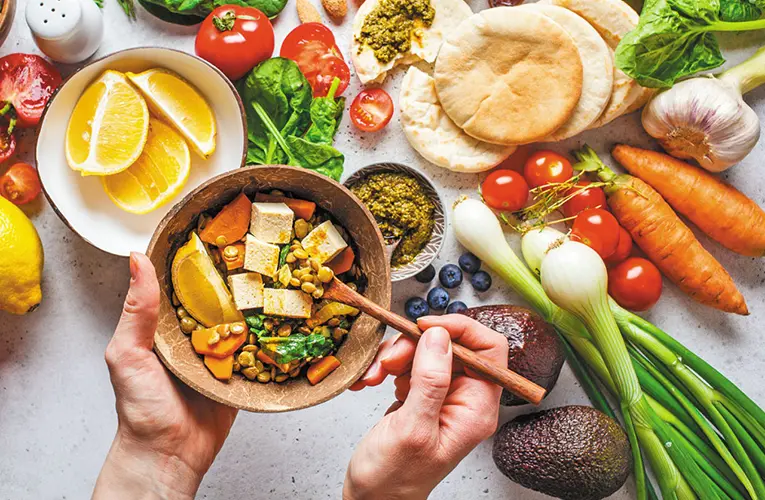“Flavorful Fusion: Exploring Global Cuisine with a Modern Twist”
### “Flavorful Fusion: Exploring Global Cuisine with a Modern Twist”
In the ever-evolving world of culinary arts, fusion cuisine stands out for its creativity and diversity. By blending traditional flavors and techniques from various cultures with contemporary approaches, fusion cuisine offers a unique culinary experience. This guide delves into the art of creating exciting fusion dishes that honor global culinary traditions while introducing modern twists.
—
### 1. Understanding Fusion Cuisine
– **Definition:**
– **Fusion Cuisine:** A culinary style that merges ingredients, techniques, and flavors from different cultures to create innovative and distinctive dishes.
– **Origins:**
– **Historical Roots:** Fusion cuisine has historical antecedents in trade and exploration, where cultural exchanges led to the blending of ingredients and cooking methods.
– **Modern Development:** The contemporary fusion movement gained prominence in the late 20th century, driven by globalization and a desire for new culinary experiences.
– **Purpose:**
– **Innovation:** To explore and create new flavor profiles and dishes that push beyond traditional boundaries.
– **Accessibility:** To make diverse global flavors and techniques more accessible and relatable to a wider audience.
—
### 2. Key Elements of Fusion Cuisine
– **Ingredients:**
– **Global Staples:** Ingredients like lemongrass, miso, saffron, and chipotle can be combined to add depth and complexity to dishes.
– **Seasonal and Local:** Blend global ingredients with locally available produce to enhance freshness, support sustainability, and adapt to local tastes.
– **Techniques:**
– **Traditional Methods:** Incorporate cooking techniques from various cultures, such as stir-frying, grilling, and slow-cooking, to bring authenticity to fusion dishes.
– **Modern Techniques:** Utilize contemporary methods like sous-vide, molecular gastronomy, and fermentation to introduce innovative textures and flavors.
– **Flavors:**
– **Layering Flavors:** Create complex dishes by combining complementary and contrasting flavors, such as sweet and spicy or tangy and umami.
– **Balancing Profiles:** Achieve a harmonious balance of flavors by integrating different seasoning elements, including herbs, spices, and acids.
—
### 3. Classic Fusion Dishes with Modern Twists
– **Korean BBQ Tacos:**
– **Ingredients:** Korean-style marinated beef (bulgogi), kimchi, and spicy mayo.
– **Technique:** Grill the beef to infuse smoky flavors and top with tangy kimchi. Serve in tortillas for a Korean-Mexican fusion experience.
– **Sushi Burrito:**
– **Ingredients:** Sushi rice, raw fish (like tuna or salmon), avocado, cucumber, and sriracha aioli.
– **Technique:** Roll sushi ingredients in a large seaweed wrap to create a fusion of Japanese sushi and Mexican burrito.
– **Italian Pasta with Thai Red Curry Sauce:**
– **Ingredients:** Spaghetti, Thai red curry paste, coconut milk, and fresh basil.
– **Technique:** Toss cooked pasta with a creamy Thai curry sauce for an Italian dish with a spicy Thai twist.
– **Churros with Matcha Dip:**
– **Ingredients:** Traditional churro dough, matcha green tea powder, and vanilla.
– **Technique:** Fry churros until crispy and serve with a sweet and creamy matcha dipping sauce.
—
### 4. Ingredients to Experiment With
– **Herbs and Spices:**
– **Indian Spices:** Garam masala, cumin, coriander.
– **Middle Eastern Spices:** Sumac, za’atar, saffron.
– **Condiments and Sauces:**
– **Asian Sauces:** Soy sauce, hoisin sauce, miso.
– **Latin Sauces:** Salsa verde, chimichurri, mole.
– **Proteins and Vegetables:**
– **Unique Proteins:** Tofu, tempeh, duck.
– **Global Vegetables:** Jicama, lotus root, chayote.
—
### 5. Techniques for Successful Fusion Cooking
– **Research and Respect:**
– **Cultural Sensitivity:** Understand and honor the origins of the ingredients and techniques used. Avoid cultural appropriation by respecting the traditions behind the dishes.
– **Experimentation:**
– **Trial and Error:** Experiment with different combinations and techniques to discover what works best.
– **Small Batches:** Start with small quantities to perfect recipes and ensure balanced flavors before scaling up.
– **Presentation:**
– **Visual Appeal:** Use modern plating techniques to enhance the visual presentation of fusion dishes.
– **Cultural Elements:** Incorporate visual elements from the different cuisines to create a cohesive and engaging presentation.
—
### 6. Examples of Fusion Cuisine Around the World
– **Japanese-Peruvian Nikkei Cuisine:**
– **Examples:** Sushi with ceviche toppings, miso-marinated seafood paired with Peruvian potatoes.
– **American-Southern Indian Fusion:**
– **Examples:** Spicy curry fried chicken, sweet potato and chickpea curry.
– **Mexican-Mediterranean Fusion:**
– **Examples:** Tzatziki-topped tacos, quinoa-stuffed poblano peppers.
—
### 7. Tips for Home Cooks
– **Start Small:**
– Begin by introducing a few fusion elements into familiar recipes to build confidence and refine your palate.
– **Stay Informed:**
– Keep up with culinary trends through food blogs, cooking shows, and workshops to stay inspired and informed.
– **Get Creative:**
– Don’t hesitate to experiment and innovate. Use your creativity to blend flavors and techniques from various culinary traditions.
—
### 8. Future Trends in Fusion Cuisine
– **Health-Conscious Fusion:**
– **Trend:** Integrating nutritious ingredients and healthier cooking methods into fusion dishes to cater to health-conscious consumers.
– **Sustainability Focus:**
– **Trend:** Utilizing sustainable ingredients and practices to address environmental concerns and promote eco-friendly dining.
– **Technological Integration:**
– **Trend:** Employing advanced cooking technologies and tools to enhance textures, flavors, and overall innovation in fusion cuisine.
—
### 9. Conclusion
– **Summary of Key Points:**
– Fusion cuisine creatively combines global ingredients and techniques to produce innovative dishes that respect traditional culinary practices while embracing modern tastes.
– **Encouragement:**
– Explore and experiment with fusion cuisine, using this guide as a resource to create unique and flavorful dishes.
– **Call to Action:**
– Try your hand at fusion cooking, share your culinary creations, and continue exploring the diverse world of global flavors with a modern twist.
—
This guide provides a comprehensive overview of how to craft fusion cuisine, offering practical advice, examples, and inspiration for blending global culinary traditions with contemporary approaches.










